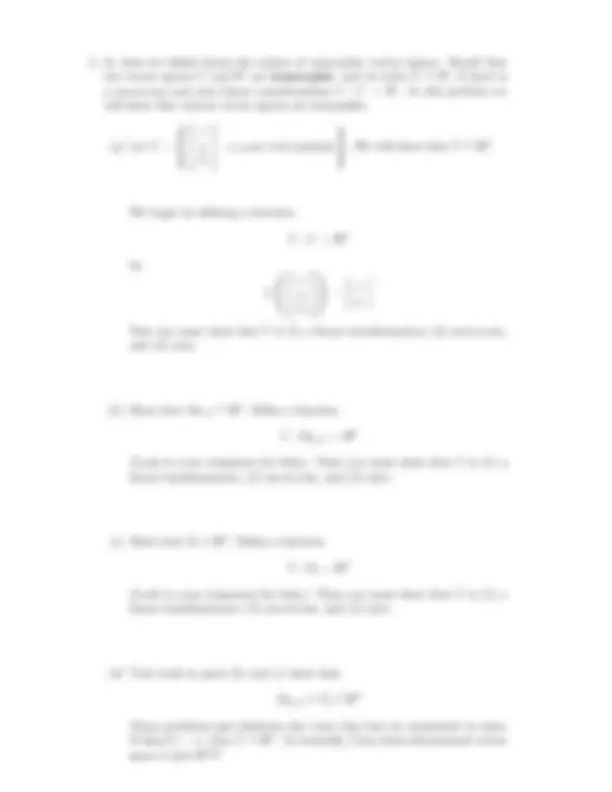



Study with the several resources on Docsity

Earn points by helping other students or get them with a premium plan


Prepare for your exams
Study with the several resources on Docsity

Earn points to download
Earn points by helping other students or get them with a premium plan
Community
Ask the community for help and clear up your study doubts
Discover the best universities in your country according to Docsity users
Free resources
Download our free guides on studying techniques, anxiety management strategies, and thesis advice from Docsity tutors
Additional problems for math 250 assignment #13, focusing on determining whether functions are one-to-one and onto, as well as showing that various vector spaces are isomorphic. Students are required to show that specific functions are linear transformations, one-to-one, and onto. The document also mentions that every finite-dimensional vector space is isomorphic to rn.
Typology: Assignments
1 / 2

This page cannot be seen from the preview
Don't miss anything!


Math 250 Additional Problems for Assignment #13 Due December 1, 2009
(a) T : R → R defined by T (x) = x^3.
(b) Let V = {all people who have ever lived} and W = {all women who have ever lived}. Define a function T : V → W by T (x) = mother of x. (Ignore Adam and Eve.)
(c) T : M 2 × 2 → R defined by T (A) = det(A).
(a) Let V =
x y 0
(^) : x, y are real numbers
. We will show that V ∼= R^2.
We begin by defining a function:
T : V → R^2
by
T
x y 0
x y
Now you must show that T is (1) a linear transformation, (2) one-to-one, and (3) onto.
(b) Show that M 2 × 2 ∼= R^4. Define a function
T : M 2 × 2 → R^4
(Look in your classnotes for help.) Then you must show that T is (1) a linear transformation, (2) one-to-one, and (3) onto.
(c) Show that P 3 ∼= R^4. Define a function
T : P 3 → R^4
(Look in your classnotes for help.) Then you must show that T is (1) a linear transformation, (2) one-to-one, and (3) onto.
(d) Your work in parts (b) and (c) show that
M 2 × 2 ∼= P 3 ∼= R^4
These problems just illustrate the (very big) fact we mentioned in class: If dim(V ) = n, then V ∼= Rn. So basically, every finite-dimensional vector space is just Rn!!!